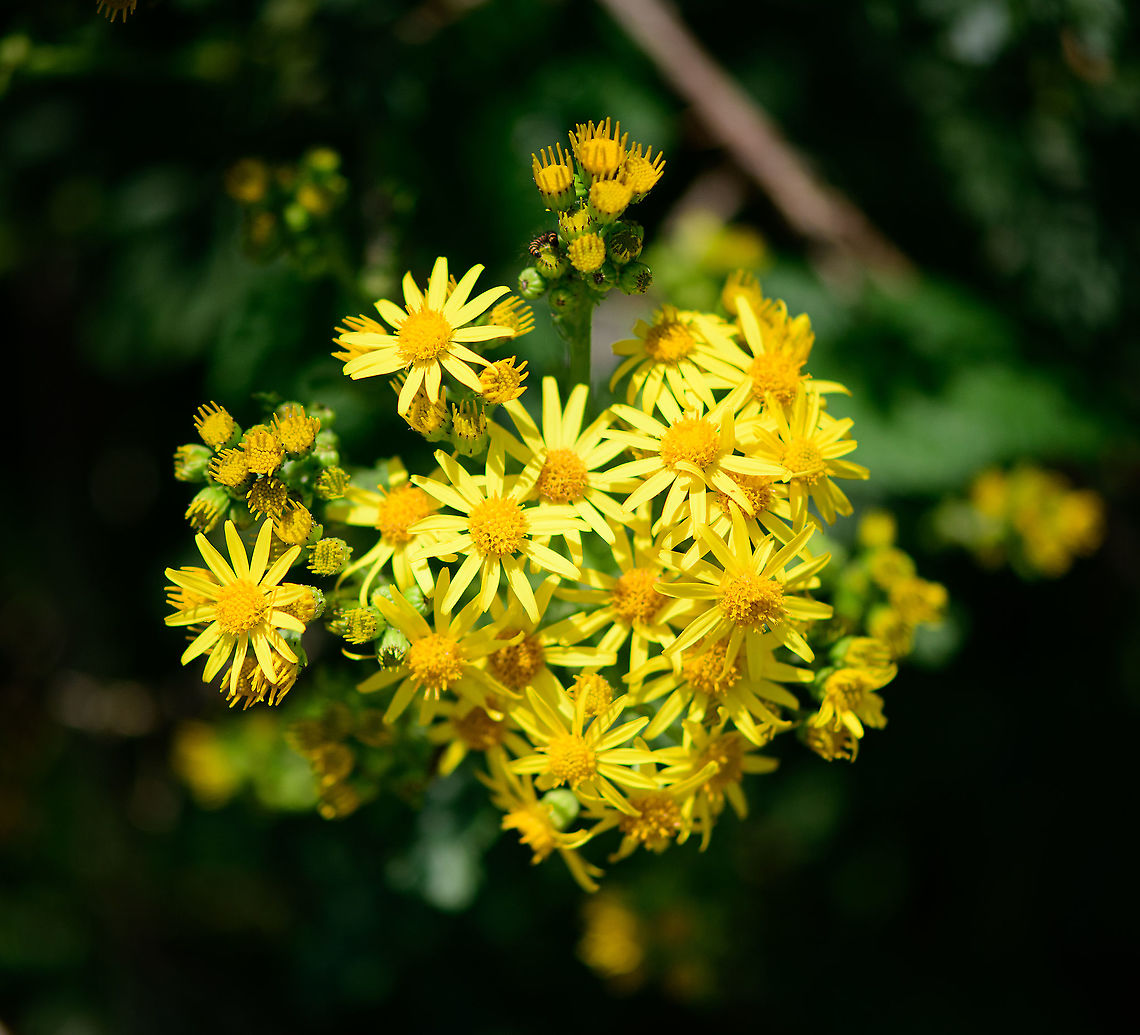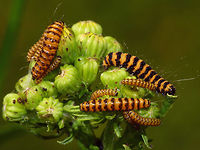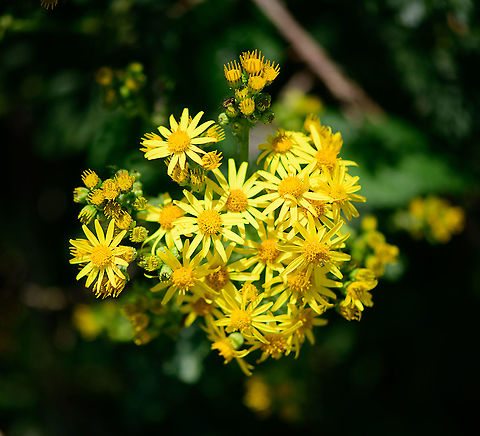 Promoted
Promoted
Tansy ragwort - 2, Berghem, Netherlands
Abundant flowers on the Tansy ragwort, in many languages named the "St Jacob's herb". Look closely and you may find a Tyria jacobaeae larva in the scene. Which is a daytime moth named Cinnabar moth in english, yet "St Jacob's butterfly" in some other languages.
Larva and adult by others:


The larvae of the Cinnabar moth are notoriously self-defeating. Due to the large quantity of eggs, they appear in large numbers. There's no limit to their appetite. As they ferociously feed on ragworts, they become chemical waste bins themselves, unattractive to predators. Without pressure from predators, most can continue feeding until ultimately food runs out, and they die from hunger before reaching adulthood. Before that, many turn cannibalistic.

"Jacobaea vulgaris", syn. "Senecio jacobaea", is a very common wild flower in the family Asteraceae that is native to northern Eurasia, usually in dry, open places, and has also been widely distributed as a weed elsewhere.

comments (2)